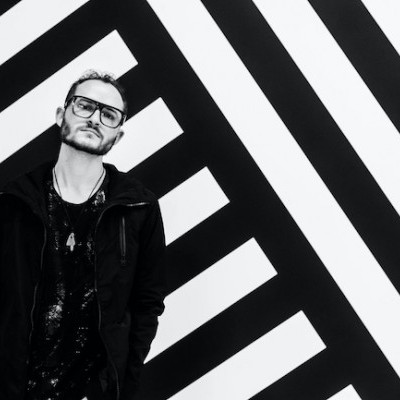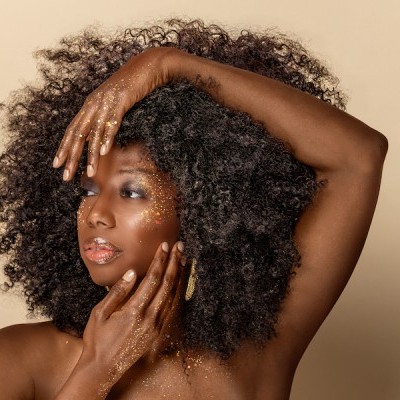Oct 28, 2025 10:47 AM
In Memoriam: Jack DeJohnette, 1942–2025
Jack DeJohnette, a bold and resourceful drummer and NEA Jazz Master who forged a unique vocabulary on the kit over his…

Cecil Taylor, one of the greatest pianists of the avant garde, was taken advantage of before his death in 2018.
(Photo: Daniel Sheehan)The Kyoto Prize is not as well-known as the Guggenheim fellowship, or the MacArthur grant, both of which pianist, composer and musical seeker Cecil Taylor received during his lifetime. But it is more exclusive — only three, or, at most, four people in the fields of science, philosophy and the arts receive it each year.
In November 2013, Taylor was announced as one of the three Kyoto Prize laureates for that year. He traveled to Japan at the beginning of the month and performed at the Kyoto International Conference Center on Nov. 11, joined by longtime friend and collaborator Min Tanaka.
Taylor had been accompanied to Japan by Noel Muir, a contractor who had befriended him while working on the building next door to Taylor’s Fort Greene brownstone. But when they returned to New York, it became clear that Muir was no friend at all. He had informed the Inamori Foundation that the prize money — $492,722.55 — should be deposited in an account that he claimed belonged to the Cecil Taylor Foundation.
However, it was actually the account belonging to Muir’s company, MCAI Construction. Two weeks after Taylor’s return from Japan, the money was sent via wire transfer, and Muir withdrew a sizable portion of it in cash, using the rest for his business.
The fraud was reported to authorities in the summer of 2014; Muir was arrested in August and charged with grand larceny. Brooklyn district attorney Kenneth Thompson said at a press conference announcing the charges, “The defendant befriended Mr. Taylor and won his trust, which later made it easier for him to allegedly swindle this vulnerable, elderly and great jazz musician.”
Taylor, for his part, said, “What is painful in your heart is you have friends, that’s what friends are for, and if they make a mistake, hopefully the law will take care of them.”
As part of the court proceedings, Taylor was examined by an attorney named Adam Wilner in order to determine whether he was in need of a legal guardian. Wilner initially met Taylor in his role as court examiner, and then, with the pianist’s consent, was appointed his legal guardian. He remained in that position until Taylor’s death.
“Basically, as a guardian I [did] all kinds of social service things from making sure he’s medically OK, making sure he’s getting to doctor’s appointments, he’s getting the right kind of medication prescribed for him, making sure that his bills are paid and his finances are being managed, that whatever assets we’re able to recover from any fraud prior to my involvement, we would recover,” he said.
Noel Muir paid back $200,000 of the money he’d stolen shortly after being arrested, but still owed Taylor the balance as the case passed through the justice system. From a cell on Rikers Island, he pleaded guilty in February 2016, though he filed a motion requesting new counsel, claiming his lawyer had pressured him to take the plea. Ultimately, Muir was sentenced on April 4, 2016, to one-to-three years in prison. Brooklyn Supreme Court Judge Ruth Shillingford, who had vacated Muir’s February motion, said, “The thing about this case is that the money was taken from someone who was almost 90 years old. There’s a lot of damage done to someone at that age, when someone takes advantage of them — regardless of what the reasons are.”
Taylor was not present.
Australian filmmaker Amiel Courtin-Wilson had arrived in New York in 2014, with the intention of making an impressionistic documentary portrait of Taylor. He borrowed a camera from a friend and began camping out on the pianist’s doorstep from roughly noon to 10 p.m.
“On the seventh day, he opened the door at 7 p.m.,” Courtin-Wilson recalled. “He said, ‘I’ve been watching you. You seem very patient. Come inside.’”
Courtin-Wilson moved into Taylor’s brownstone, where he lived off and on for the next two years.
Taylor wasn’t playing much piano since returning from Japan, but he was mentally and physically active. “He always had, you know, four books spread out on his bed,” Courtin-Wilson recalled. “He would practice, I would say, maybe like once a week, and then he might practice three or four hours.”
The filmmaker cooked for Taylor, shopped for him and helped connect him with the wider world again. “It seemed like I’d arrived at a period where he was particularly reclusive. … I mean, he definitely had his regular visitors. Don’t get me wrong. There was, I would say, on average … six or nine sort of regular visitors. And then, he would read, hold court, we would talk, five, six hours a day at least, listen to music.” Courtin-Wilson introduced Taylor to YouTube, showing him clips of Etta James and Stevie Wonder; the pianist referred to it as “the infernal library machine.”
Courtin-Wilson describes Taylor as “a machine. … I have so many photos of him being up until 8, 9, 10 o’clock in the morning and an array of people a third his age sleeping around him on couches and stuff — he would sometimes not sleep for close to two days.”
Taylor’s 87th birthday was a particularly long night in Courtin-Wilson’s recollection.
“We were at KGB until like 8 a.m., and then everyone was fading, and he was really out-out. And then he wanted to go back [to Brooklyn] for breakfast, and we had pancakes and a big chocolate milkshake at the local diner. It was like 11 in the morning. And I was like, ‘Cecil, I’m absolutely fucked. I need to sleep, man.’ And we went home, and I slept. Woke up at like 4 and he hadn’t gone to bed. He was awake until like 11 that night.”
In 2015, the Whitney Museum had moved from its former location on Madison Avenue and 75th Street to a new building designed by Italian architect Renzo Piano at 99 Gansevoort St., just off the West Side Highway and marking the southern terminus of the High Line park. Jay Sanders, a curator of live performance events for the Whitney, had been planning a large-scale project with Taylor since mid-2014.
In December, Taylor came to the museum, still under construction, and Sanders gave him a tour of the fifth floor, a massive column-free space with gigantic windows overlooking the highway and the Hudson River on one side, and lower Manhattan on the other.
“The building hadn’t opened,” Sanders said, “and he came in this beautiful Pendleton-looking coat, and we gave him a hard hat … and he saw that open floor and it was like, at that point, ‘Would you like to do something here?’ And he said yes. So that was the start of it.”
Open Plan: Cecil Taylor, which ran April 15–24, 2016, was a multimedia art show, an academic conference and a concert series all in one. During its 10-day run, it included poetry readings, musical performances by Taylor’s former sidemen, a panel discussion on the role of dance in his work featuring dancers who had performed with him, and much more. But most important of all was that Taylor himself played three times, twice at the beginning of the show and once at the end, with three different ensembles.
Taylor had barely touched the piano for months between his return from Japan and the time the show was first conceived. But as the hour drew closer, something in him reawakened.
“I still remember the night he first played, like, for real,” Courtin-Wilson said. “It was raining and the basketball was on, and I was downstairs making dinner, and I heard the piano go. And it was a familiar kind of sound. You could hear him shuffling across to his piano, but then instead of the usual scales, this most fucking beautiful, wistful, slow, almost like blues … and it was the sound of the rain on the roof and this basketball match going and these notes, so much space between the notes, and that was the first moment I remember being so moved that he was inspired again, because at that point I’d been there on and off for almost 18 months. And then it really [was] like a dam broke. … He played a lot, because he really wanted to get fit for it.”
The first performance on April 14, 2016, was with Tony Oxley and Min Tanaka, who despite being a purely visual presence seemed to be a crucial component of the music from the pianist’s perspective. Oxley was too ill to get behind a kit, but had prepared CDs of himself playing drums that he played through twin CD players with volume pedals, fading himself in and out; Sanders called it “beautiful and strange.”
The second performance that night came as a surprise. After a break, Taylor played again with a group he called the New Unit, featuring Bobby Zankel on alto saxophone, Elliott Levin on tenor saxophone and flute, Harri Sjöström on soprano saxophone, Tristan Honsinger on cello, Albey Balgochian on bass and Jackson Krall on drums, with poetry by Jane Grenier Balgochian and Taylor himself.
Writer Hank Shteamer, who was present for the entire evening, wrote, “There was a sort of casual aspect to the proceedings. Much of the audience filed out, players made their way to the stage … and what followed was a sort of loose, old-school free-jazz jam. Moments of inspiration, moments of tedium, but what was striking was the smile on Taylor’s face.”
The third and final performance, on April 24, featured another one-off ensemble: Harri Sjöström on soprano sax, Okkyung Lee on cello, Tony Oxley on electronics and Jackson Krall on drums. The music began slowly, but eventually rose to a towering height, with Taylor leaping and pounding his way across the keyboard and Krall driving him onward with what seemed like an unbroken series of explosions. After a little more than 35 minutes of music, though, he stopped playing, and everyone else stopped, too. Standing up at the keyboard, he began reading a poem, which turned into a discourse on issues of biology, human migration and the history of the artistic impulse in Man.
This was not poetry, it was a lecture, its theme a sustained counter to the traditional Western, phallocentric narrative of (pre)history. He was arguing for Blackness, for matriarchy and for the primacy of art in the human spirit. In key ways, this was a direct articulation of theories that had flowed at the heart of his music for 60 years. And after a brief return to the hyper-abstract, words-as-sounds poetic mode in which he’d begun, he stopped and said, “Thank you all, that’s it,” his voice full of life and joy.
He would never perform in public again.
In the months after the show, Taylor withdrew. Courtin-Wilson returned to Australia; the materials from the exhibit were crated up and returned to Taylor’s home in Brooklyn; and Adam Wilner and his staff kept potentially untrustworthy people away.
“I totally understand, because he’d been totally ripped off and stolen from. I totally get the need for a lawyer to vet who came to see him,” Courtin-Wilson said. “But what was really tragic to me was it seemed as though as less and less people were deemed trustworthy to see Cecil … it seemed to accelerate his deterioration in my mind, which I thought was very sad.”
Even if he was receding into dementia — which some claimed, and others denied — it was part of a larger shift. A kinder, gentler version of the infamously volatile Taylor emerged. “Certain things that had previously driven him had dissipated with age, maturity,” said longtime friend Robert Levin. “I think he knew that he had achieved what he had set out to do, at least in some measure … and that enabled him to relax, and to be more indulgent of other people’s needs and characters.”
Cecil Taylor died in his sleep, at home in Brooklyn, on April 5, 2018. The word had spread in the New York musical community that he was very ill, and he had been surrounded by friends and former collaborators for several days before his passing. A few days later, a memorial service was held at the Frank E. Campbell Memorial Chapel on Madison Avenue in Manhattan.
“I had nothing to say that I hadn’t already said in a couple of things that I wrote, and it was too personal,” Levin said. “You know, he didn’t need me to eulogize him. … I didn’t even go to the coffin. I didn’t want to see him dead. I had already seen him die. I stayed away from the coffin and stayed out of anything I was hearing about what arrangements were being made. I mean, he wasn’t there anymore. Wherever they put his body made no difference.”
Taylor’s body was cremated, but his ashes were interred at Woodlawn Cemetery in the Bronx, where many notable jazz musicians are buried, including Duke Ellington, Miles Davis, Ornette Coleman and Max Roach.
Taylor died without a will, and as of this writing there are multiple competing factions trying to lay claim to his estate. Lawrence Kumpf of the nonprofit Blank Forms has been working to set up a foundation and preserve his work.
Kumpf quickly realized that he was going to have to take a very active role if he wanted to preserve any materials at all. “I was in touch with Adam Wilner initially because Cecil and I had been working on a book of [his] poetry together, and I wanted to complete that process. And then one day Adam was just like, ‘I’m not involved in this anymore,’ and he directed me to Kings County. So I went in and … offered to advise them on some of the materials at the house and just sort of explained to them that he was an important figure and they shouldn’t just, like, sell his stuff off at a flea market, which is normally what they do.”
Hired as a consultant, he boxed up everything that remained in the house, documenting all of it and placing it in storage. One particular item was treated with special reverence: Taylor’s Yamaha piano, which had lived in the house for decades.
“Right now it’s at the Smithsonian in D.C.,” Kumpf said, “It’s in storage waiting for the estate to be settled and the paperwork to be filed so they can permanently integrate it into their collection.” DB

Jack DeJohnette boasted a musical resume that was as long as it was fearsome.
Oct 28, 2025 10:47 AM
Jack DeJohnette, a bold and resourceful drummer and NEA Jazz Master who forged a unique vocabulary on the kit over his…

“I’ve told students, ‘I don’t mind if you use AI for this or that project,’” says MIT’s Pascal Le Boeuf. “‘But you need to tell me.’”
Sep 18, 2025 11:14 AM
A standard joke when it comes to discussing artificial intelligence, or AI, is that it’s developing so rapidly that…

Chuck Manning Works for NASA … and plays jazz.
Sep 18, 2025 11:23 AM
Congratulations! After years of study, you’ve earned your degree in jazz performance. But let’s face it: Making a…

Gadabout Season developed over many months of recording sessions in Brandee Younger’s East Harlem living room.
Sep 16, 2025 11:52 AM
When she’s on the road, Brandee Younger enters a hybrid state of action and contemplation. Free of daily distractions…

Cleo Laine, 1927–2025
Sep 16, 2025 10:03 AM
The music world mourns the loss of three important artists from the realms of jazz, blues and beyond with the recent…